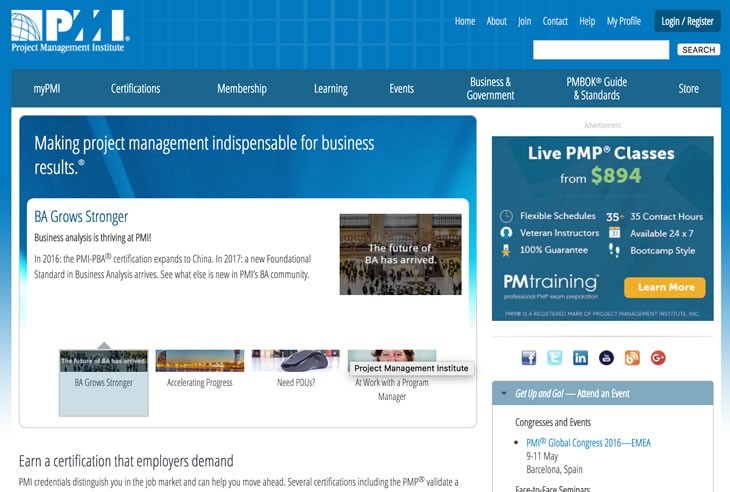In the summer of 2004, Ocala, Florida was hit by two hurricanes which barreled through the state. Lengthy power outages and widespread structural damage forced many medical practices to close. Some of the more coastal practices weren’t able to conduct surgeries for a few weeks after the hurricanes hit.
By our original time line, the launch of our electronic medical records (EMR) system was for late summer, 2005. The unfortunate effects of the hurricanes forces us to postpone the date two more months. This delay coincided with some other events at the practice: construction of another office location, and the addition of a new associate. We understood that the success of the EMR system would require an ongoing commitment – we chose to move the go-live date to the start of 2006.
The president of the Atlanta chapter of the Project Management Institute (PMI), Frank Polack, explains methods that a project manager can use to help a plan mitigate the effects of unforeseeable events. He describes the ten Change Management principles in his second article in the series. According to Mr. Polack, implementation of a sound change management project is a huge factor in achieving project success.
An excellent change management project ensures that office culture successfully adapts to new systems. Implementation requires a Project Manager to oversee the project. A project, as defined by the Project Management Institute, is a ‘temporary endeavor undertaken to create a unique product or service.’
Begin with a Project Charter. This charter describes what we’re doing and why, along with the anticipated budget and schedule. This project charter should also address the risk potential, constraints, and outline anticipated milestones as well as those of any concurrent projects.
Microsoft Project is a great scheduling tool. Even MS Excel is able to be used for task tracking. It’s usually a good idea to maintain a log including the probability of particular risks, including projected impacts and mitigation. This log should keep track of issues that require attention. The PMI publishes some standards including knowledge areas important to a project manager, who should employ processes from each of the nine areas in order to ensure full coverage on the project.
Three of the nine areas are identifies as ‘triple constraints.’ The restraints are cost (budget), time (schedule), and scope (work). If any are changed, the others will be affected. Increasing the project scope will result in increased time and cost, for example. By lowering the cost, the quality and scope must both be decreased. Fewer allocated resources will require more time to complete the project. It’s particularly important to keep dependencies in mind, as when tackling task 2 is dependent on task 1 being completed.
Quality Management requires inspections, to be certain you’re implementing strategies which satisfy established requirements. Simply waiting to see if all turns out correctly is a bad idea.
Communication Management: What must be communicated, and to whom and how? Important team members may require frequent updates, while others receive information less often. Will updates be distributed by memo or e-mail? When will meetings take place, and who should attend?
Human Resources Management: Who are the SMEs, the subject matter experts? Who’s on the project team? Will the manager have full authority over the allocated resources?
Procurement Management: Understand vendor contracts and the terms you’re entering into, be it cost-plus, fixed-price, or time & materials.
Risk Management: Identify, qualify, and account for potential impacts. Next calculate the costs in terms of time and money. A risk management plan should be developed to cope with identifying and mitigating risks as they occur. Risks should be regularly monitored as something with a low probability will have a greater impact later on.
Integration Management: Includes all elements listed above, along with assurance that they’re managed during the entire project cycle.
Project managers can reduce the pain and cost associated with implementation. They are available for hire, and your local PMI chapter is a great place to start in the search for the right person for your plan: http://www.pmi.org.

